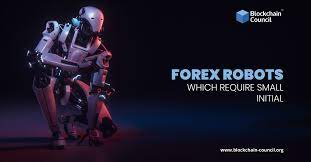
In the dynamic world of forex trading, where currency values fluctuate by the second, traders are constantly seeking innovative ways to maximize their profits while minimizing risks. Among the arsenal of tools available to forex robot, one of the most intriguing is the forex robot. Also known as expert advisors (EAs), these automated trading systems have been gaining popularity among both novice and experienced traders. But what exactly are forex robots, how do they work, and can they truly unlock profits?
What is a Forex Robot?
A forex robot is a computer program or algorithm designed to automatically execute trades in the foreign exchange market (forex). These robots are built upon predefined trading strategies and parameters, allowing them to analyze market conditions, identify trading opportunities, and execute trades without human intervention.
How Do Forex Robots Work?
Forex robots operate based on a set of rules programmed by their developers. These rules are often based on technical indicators, price action patterns, or fundamental analysis criteria. Once activated, the robot continuously monitors the market, scanning for trading signals that meet its predefined criteria.
When a favorable trading opportunity is identified, the robot automatically places buy or sell orders on behalf of the trader. The speed and accuracy of execution are key advantages of forex robots, as they can react to market movements much faster than a human trader.
Benefits of Forex Robots
- 24/7 Trading: Unlike human traders who need rest, forex robots can operate 24 hours a day, 7 days a week, taking advantage of trading opportunities across different time zones.
- Emotion-Free Trading: Emotional biases such as fear and greed can cloud judgment and lead to poor trading decisions. Forex robots execute trades based solely on predefined criteria, eliminating emotional influence from the trading process.
- Backtesting and Optimization: Before deploying a forex robot in live trading, traders can backtest the algorithm using historical data to assess its performance. Additionally, robots can be optimized to fine-tune their parameters for better results.
- Diversification: Forex robots allow traders to diversify their trading strategies by running multiple robots simultaneously or combining automated trading with manual trading approaches.
Challenges and Risks
While forex robots offer several benefits, they are not without challenges and risks:
- Over-Optimization: Excessive optimization of a forex robot to historical data can lead to overfitting, where the algorithm performs well on past data but fails to generalize to new market conditions.
- Market Volatility: Rapid changes in market conditions, especially during high-impact news events or geopolitical developments, can pose challenges for forex robots, as they may struggle to adapt quickly to sudden shifts in market sentiment.
- Technical Issues: Connectivity problems, server outages, or software glitches can disrupt the operation of forex robots, potentially leading to missed trading opportunities or erroneous trades.
- Lack of Adaptability: While some forex robots are equipped with machine learning algorithms that enable them to adapt to changing market conditions, others may lack the flexibility to adjust their strategies in response to evolving market dynamics.
Conclusion
Forex robots represent a powerful tool in the arsenal of modern traders, offering the potential to automate trading tasks, eliminate emotional biases, and unlock profits in the foreign exchange market. However, like any trading strategy, they come with their own set of challenges and risks. Successful implementation of forex robots requires thorough testing, continuous monitoring, and a deep understanding of market dynamics. Ultimately, whether forex robots can truly unlock profits depends on the effectiveness of their strategies and the skillful management of associated risks by traders.